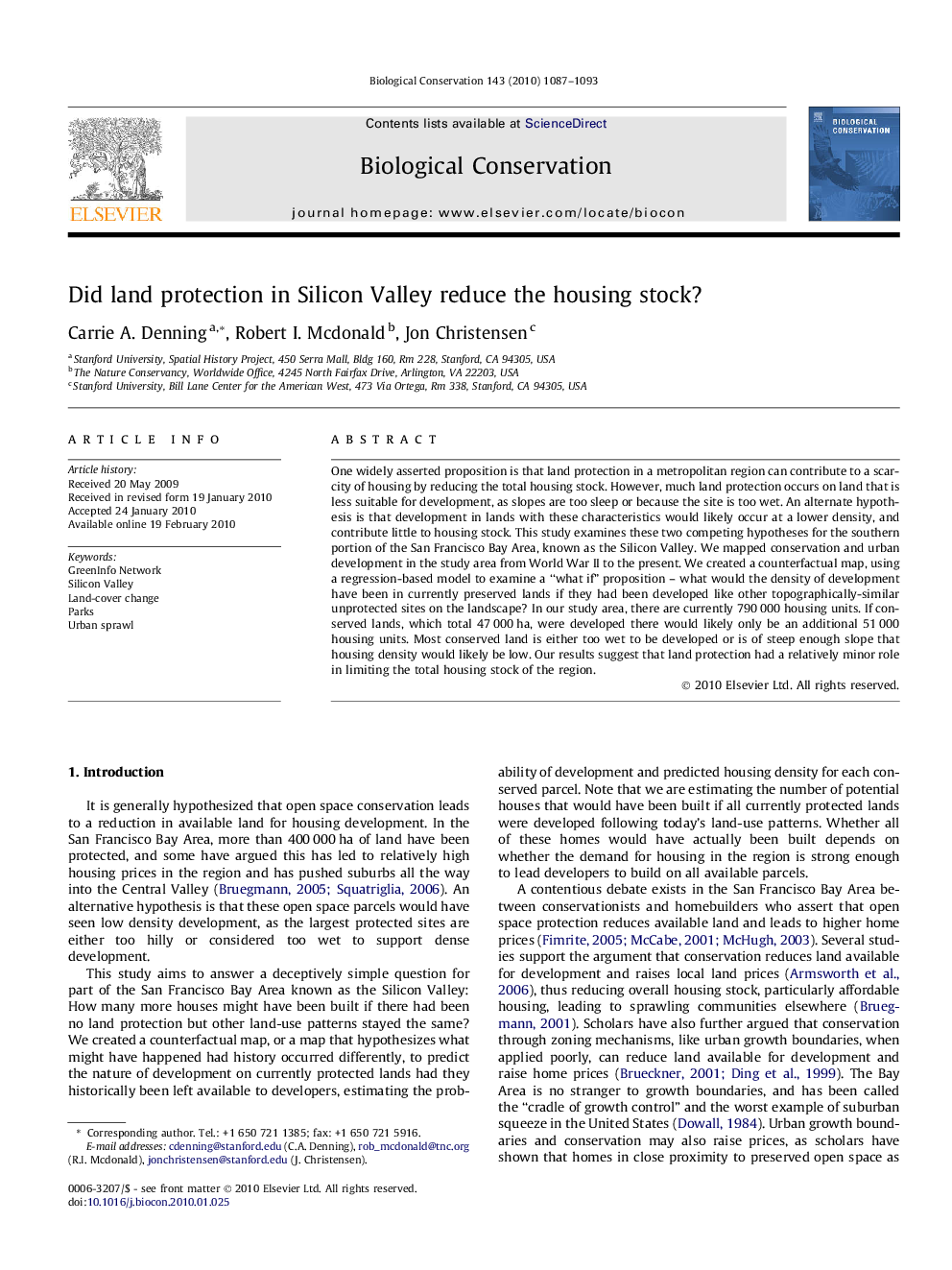| Article ID | Journal | Published Year | Pages | File Type |
|---|---|---|---|---|
| 4386317 | Biological Conservation | 2010 | 7 Pages |
One widely asserted proposition is that land protection in a metropolitan region can contribute to a scarcity of housing by reducing the total housing stock. However, much land protection occurs on land that is less suitable for development, as slopes are too sleep or because the site is too wet. An alternate hypothesis is that development in lands with these characteristics would likely occur at a lower density, and contribute little to housing stock. This study examines these two competing hypotheses for the southern portion of the San Francisco Bay Area, known as the Silicon Valley. We mapped conservation and urban development in the study area from World War II to the present. We created a counterfactual map, using a regression-based model to examine a “what if” proposition – what would the density of development have been in currently preserved lands if they had been developed like other topographically-similar unprotected sites on the landscape? In our study area, there are currently 790 000 housing units. If conserved lands, which total 47 000 ha, were developed there would likely only be an additional 51 000 housing units. Most conserved land is either too wet to be developed or is of steep enough slope that housing density would likely be low. Our results suggest that land protection had a relatively minor role in limiting the total housing stock of the region.
